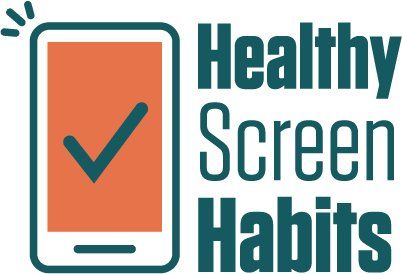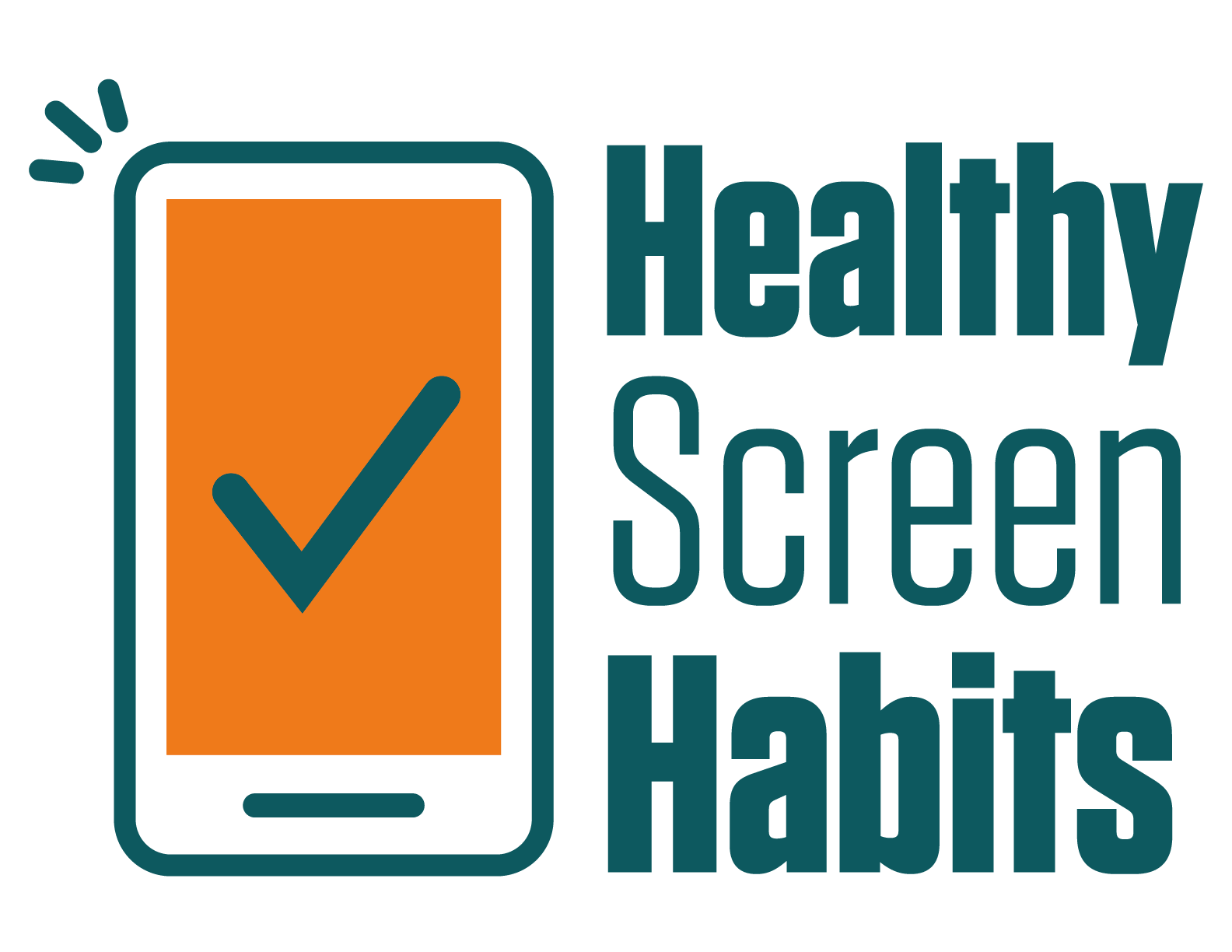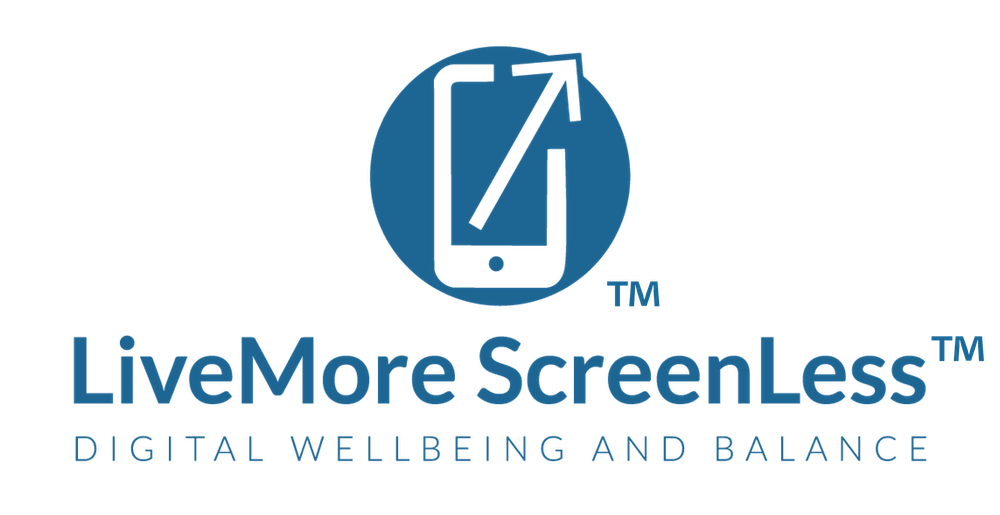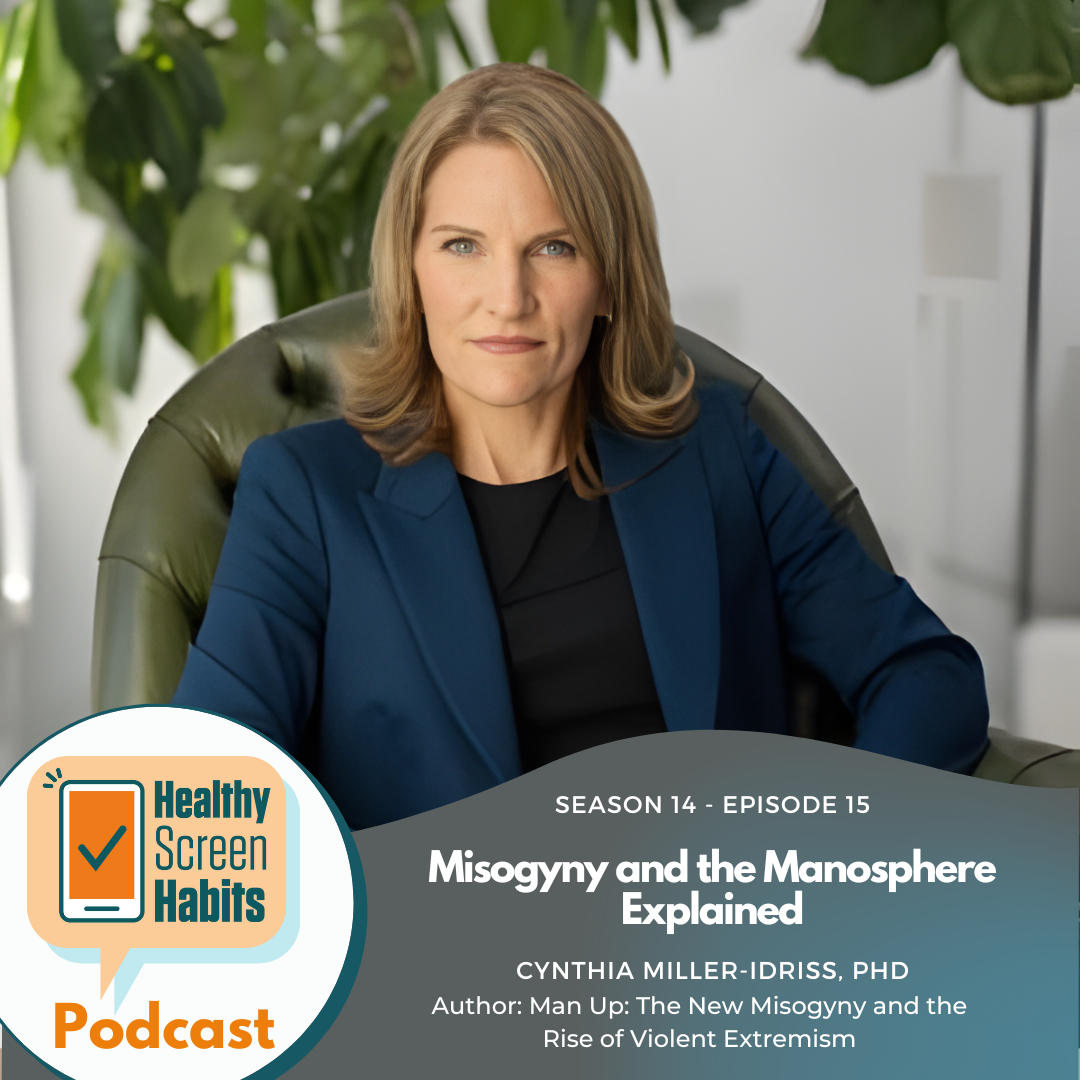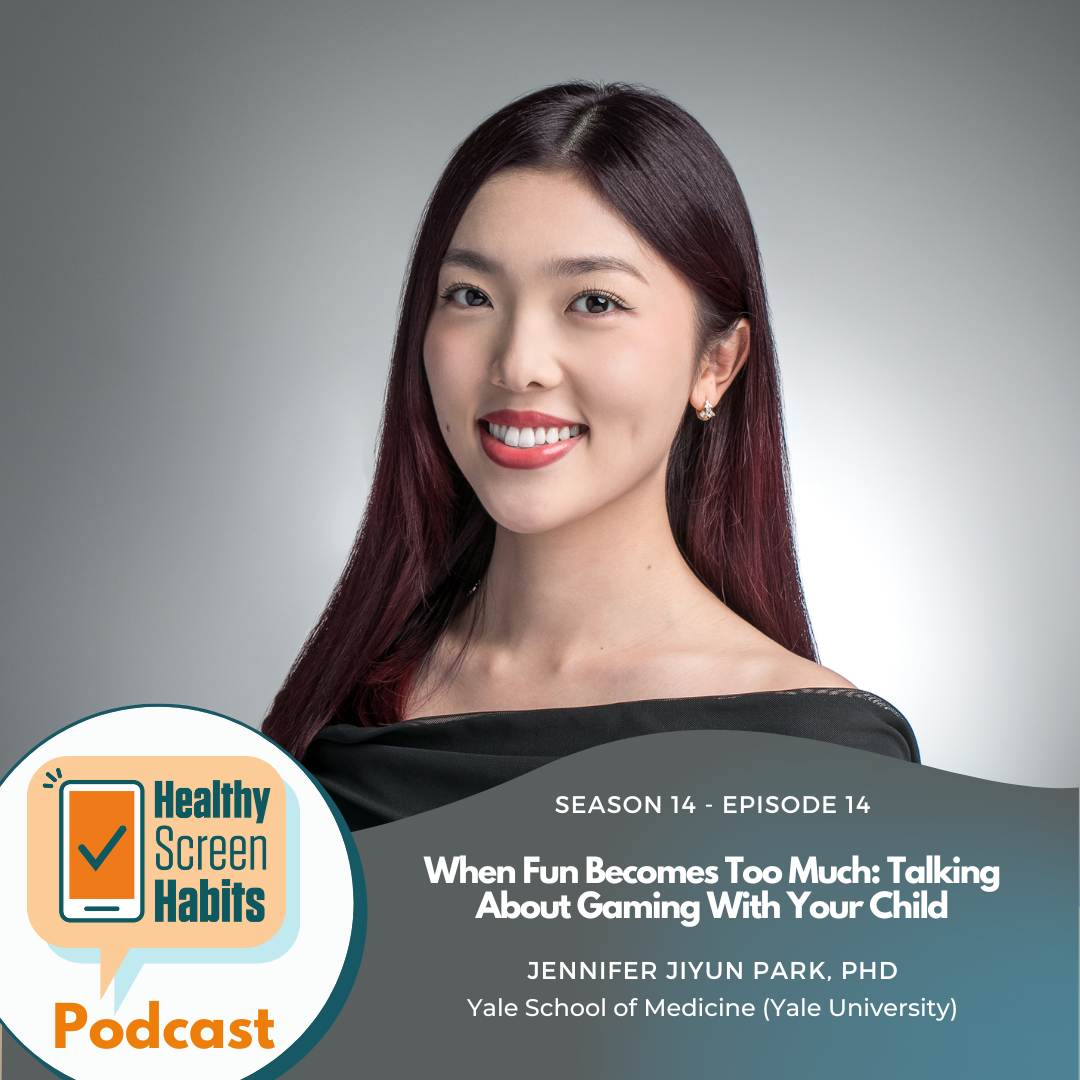S7 Episode 1: Learning How To LiveMore ScreenLess // KK Myers & Maree Hampton
Hosted by Hillary Wilkinson
Because this issue is so very complex, it is important that many people are activated within school communities to really embrace digital wellbeing and look for ways that they can help in this shift.
- Maree Hampton, M.Ed, CHES
LiveMore ScreenLess is a Minnesota-based organization that uses best practices from education, public health, and positive youth development to engage with family, schools, and organizations to promote balanced, intentional, and effective use of technology.
That is the total trifecta! The best of all possible uses of technology! Listen to this episode as I talk to the co-founders Maree Hampton and KK Myers.
They are dynamic women who are changing the way Minnesota does tech in schools.
Healthy Screen Habits Takeaway
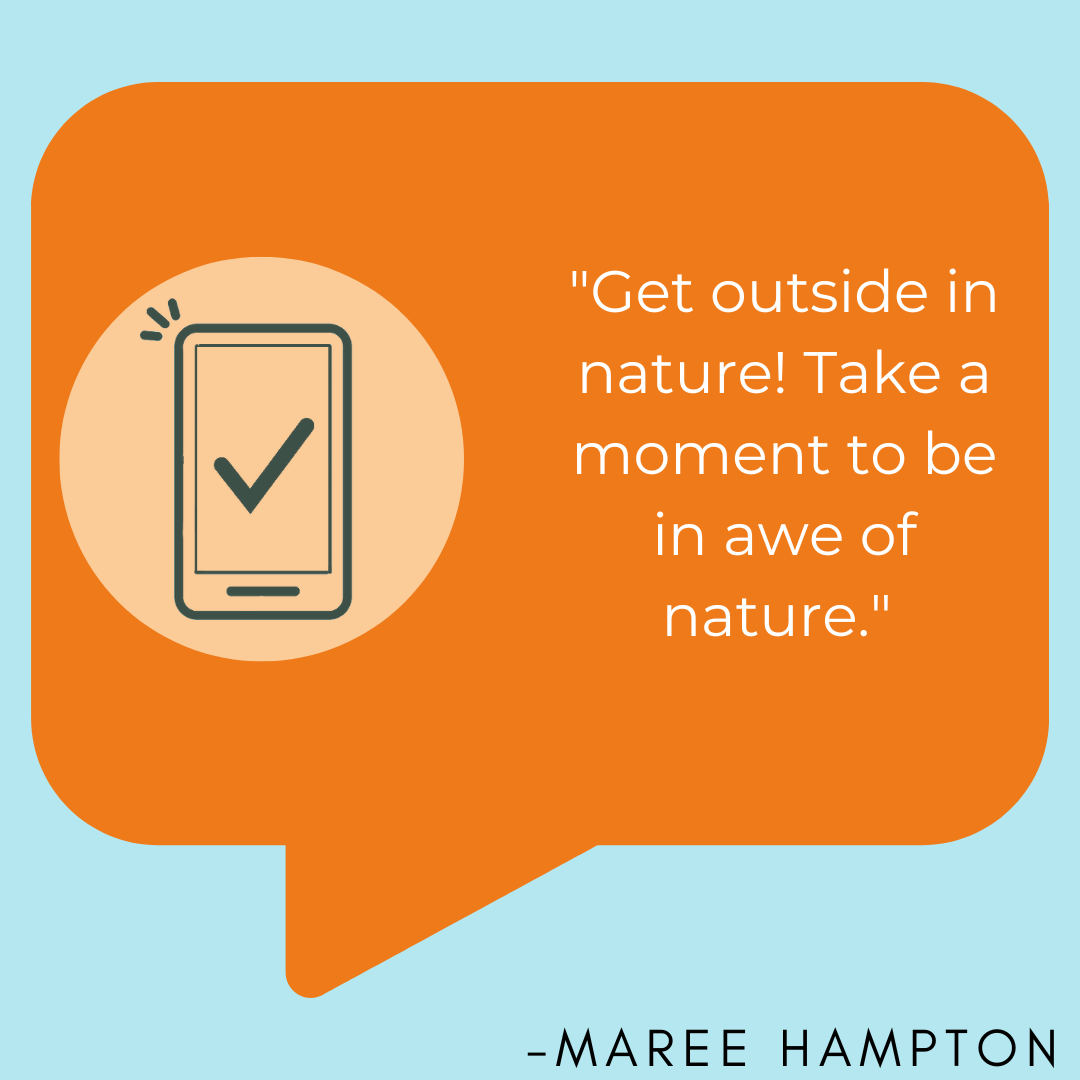
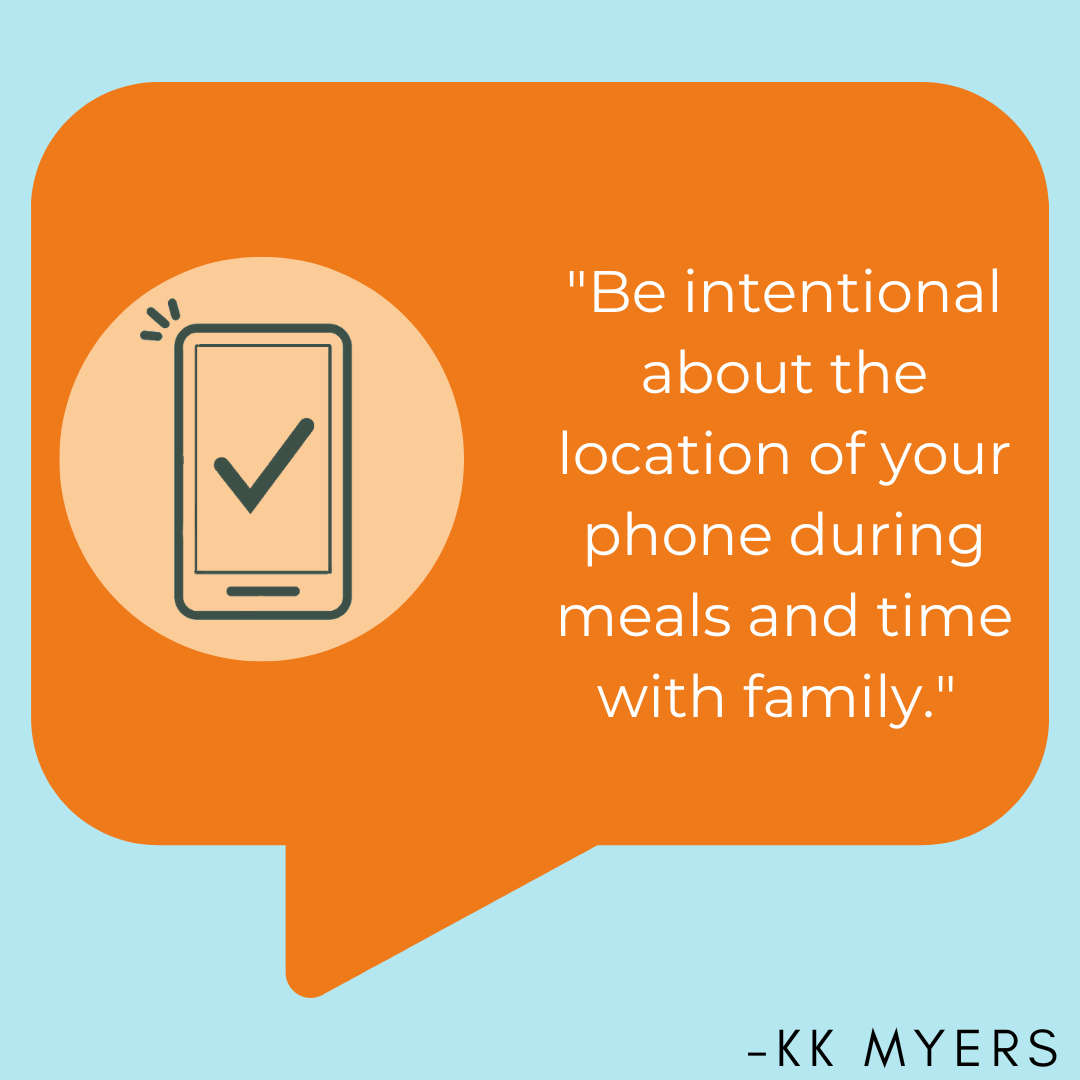
Resources
For more info: LiveMore ScreenLess Website
HSH Podcast: Season 5 Episode 7 with Cece Hawley
Show Transcript
Hillary Wilkinson (00:02):
My guests today recognize and appreciate the vast benefits that technology brings to our lives. Live More Screen Less is a Minnesota based organization that uses best practices from education, public health, and positive youth development to engage with family, schools and organizations to promote balanced, intentional, and effective use of technology. That is the total trifecta, the best of all possible uses of technology. And today we get to hear from the co-founders, Maree Hampton and KK Myers.
Hillary Wilkinson (00:54):
Maree, in the interest of being able to kind of distinguish between your two voices, could you tell us a little bit about you and what led you to this digital wellness arena?
Maree Hampton (01:06):
Yes, thank you, Hillary. So my name is Maree Hampton, and, uh, my background is in public health and youth development. And I came to this work really out of my friendship with KK and our shared, deep concern about the impact that technology overuse and misuse was having on our young people. Um, and early on we, uh, really took a deep dive into the research and really, um, did a lot of exploring to better understand what was happening with our young people and what the best strategies were to approach the issues.
Hillary Wilkinson (01:40):
So that's the business side of things. I want to appreciate all of you. What do you like to do for fun?
Maree Hampton (01:49):
Oh, that's a great question. <laugh>. Uh, I love to be outside and active. Uh, I have two sons and a husband that are very much into the out of doors. So as a family, we do a lot of hiking, biking, cross country skiing, traveling. Um, and I'm an avid knitter.
Hillary Wilkinson (02:12):
Oh. So I was waiting to hear, I'm like, there has to be a snow sport in there somewhere for you to live in Minnesota and there has to be a snow sport <laugh>. Excellent. So KK, now it's your turn. How did you come to kind of the quest that would become LiveMore ScreenLess.
KK Myers (02:33):
Hi, Hillary. Thank you. I love that question in the word quest brings me right into the classroom where I spent 25 years as a high school English teacher and the hero's journey, the on the quest is definitely central to an English teacher's task. Um, and this really has been a lot of a hero's journey that we are on. So, um, my background as an English teacher, uh, really led me to this work. So I was an early adopter of technology back in the day where I needed to take my students to the computer lab to use the computers, then eventually check out the computer cart to use in my classroom. And until eventually then we had one-to-one devices in the classroom and a smart board on the wall. I remember in, uh, 2010, 2012, students were just starting to get phones and they were forbidden at school.
KK Myers (03:34):
They couldn't be out or we could confiscate them. And I remember a student keeping it in her purse, but her face was shining, so she was trying to hide it in her purse. And it was really clear and, and, and we were able to take them. And right around 2012 when we distributed one-to-one iPads to our students was right around the time that social media boomed and the iPhone came out. Mm-hmm. <affirmative>. Uh, and then it was a perfect storm of not being able to manage devices in the classroom anymore. So we stopped taking devices. There was still a policy, but teachers just couldn't keep up. And around that same time we see national trends and Minnesota trends and the decline of young people's mental wellbeing.
Hillary Wilkinson (04:23):
Absolutely.
KK Myers (04:24):
Increased anxiety, depression, and suicide ideation. And I lived through those years of increased mental health crisis of my students. So it was this friendship with Maree, as she described, and that was born out of Nordic skiing. So you're exactly right that these Minnesota gals are together because originally of our sons and their love of skiing and ours as well. And I shared with Maree, um, the dark side of technology that I had been exposed to with, um, my students' use of technology. And, together we said, let's do something about this. And through that dive into the research, we were bolstered to see that, um, there was a hero's journey that we needed to embark on and LiveMore ScreenLess is part of that to Yeah. To really bring forth wellbeing for students and educators.
Hillary Wilkinson (05:23):
Yeah. Well, I'm so glad you, I'm glad you embarked on the journey <laugh> Maree got to answer what she liked to do for fun. And I, I wanna, I wanna follow your hero theme, <laugh>. So if you had to choose one like superhero skill, what would it be?
KK Myers (05:42):
Oh, it's a skill that both Maree and I share, I think, and that is connecting. We love people. We're very relational. Um, and I think there's a tendency for us to gather people in really authentic ways mm-hmm. <affirmative> for the good of humanity. So we're both pretty passionate about people and young people and gathering.
Hillary Wilkinson (06:19):
You are so altruistic in your superhero skills, <laugh>, because I would like to fly.
Maree Hampton (06:26):
<laugh> <laugh>.
Hillary Wilkinson (06:28):
I either wanna fly. It's, it's always this toss of flying/invisibility, flying/invisibility, <laugh>. So, but, but wow. No. Spoken like a true founder of LiveMore ScreenLess that you're gathering and connecting people for the betterment of humanity.
KK Myers (06:43):
<laugh> <laugh>. Well, I would fly too. I mean, I would, I would, I don't wanna be invisible. That's not anything I have interest in, but flying. Sure. I'd love to be up there with the birds. Yeah.
Hillary Wilkinson (06:54):
Well, yeah. And I just wanna beat traffic, so <laugh>,
KK Myers (06:58):
<laugh>. Cute.
Hillary Wilkinson (06:59):
guys have really approached this challenge. Uh, you recognized it early on, you tackled it at at a legislative level. It, because it hits us at all levels. And can you kind of tell us how that happened
Maree Hampton (08:31):
We started our organization, uh, out of that deep concern and really wanting to have the opportunity to listen to young people. Okay. And so before that legislative, uh, effort began, we were taking time to listen to young people through formal focus groups, through informal classroom discussions, through some interviews and videos that we ended up creating, which, uh, is a series of what we call “listen in” videos. So, we took that deep dive into research, and then we turned to young people to really understand what they were facing as well as educators. So actually, one of our first steps was to survey educators to better understand how it was to manage technology in the classroom. Armed with these voices of educators and young people, we were invited to speak to the Rice County elected officials group that was focused on adolescent mental health. KK and I only had 10 minutes to share all that we wanted to share. Oh my gosh. And that is often very challenging for us because we have a lot to say. But at the conclusion of the presentation, Representative John Hewitt came up to us and shared with us that he was serving on the education committee in the Minnesota House, and would we come to the committee and do the exact same presentation because he said, “We need to know about this.” And he turned to us and he said, “Would you write a bill?”
Maree Hampton (10:17):
So of course, KK And I said, “yes, of course we can write a bill” <laugh>.
Hillary Wilkinson (10:21):
I love <laugh>. I love that. I'm picturing you guys Yes, absolutely. And as you're walking away going, what, what do we do?
Maree Hampton (10:30):
<laugh>? How did we do that? <laugh>?
Hillary Wilkinson (10:34):
I love that. And, and as a result, what happened?
Maree Hampton (10:42):
So, um, we set up a meeting with this legislator. We went to his office and we talked to him again. We had 10 minutes. Legislators are very, very busy, and when you set up a meeting with them, you're lucky if you get 15 minutes. But we shared with him our work, and he said, we have to get you a grant. And KK and I, again, looked at each other and said, wow, we hadn't even thought about turning to the legislature. Like we decided we were gonna be a nonprofit. That's a very monumental task to create a sustainable nonprofit. It's, it's a huge amount of work. So we hadn't really thought about the legislature as a source of a grant. So anyway, we ended up connecting with some other champions in the Minnesota legislature who really took this issue to heart. One particular senator who had some constituents who had lost their children due to suicide related to issues on, on screens and cyber bullying.
Maree Hampton (11:45):
He had a deep passion about this issue, not only for from his constituents, but because he just realized this billion dollar industry was taking our attention and making money off of it. Mm-hmm. <affirmative>. And so when he learned about our organization, he became an incredible champion. And he happened to be the Chair of the Education Finance Committee and provided us with the opportunity to write the bill and present in front of some hearings in front of this committee. So he really paved the way. Uh, ultimately we had bipartisan support for this bill, Digital Wellbeing bill that became law in June 31st, 2021. And that law enabled the Minnesota Department of Education to provide a grant to LiveMore ScreenLess to work on four projects that really built the foundation of raising awareness and education, um, for digital wellbeing.
Hillary Wilkinson (12:46):
Oh, fantastic. It, uh, uh, it's one of those things where, um, you know, it's that whole, like, luck favors the, was it chance or luck favors the prepared. And I think all the groundwork that you had done, led you to that place where when you were given this opportunity, you were like, yes, we will do that. And I think it just speaks to your whole life path between being, you know, the, the education, the public health, everything. It kind of all feeds into this place where you're at now.
Maree Hampton (13:27):
That's really perceptive, Hillary, because the other piece that I didn't mention that KK and I were really intentional about when we started this work is we went on a listening tour of other professionals. So we actually created this log of relationship building. We went to other nonprofit leaders. We went to individuals who were working in various mental health care facilities. We spoke to child psychologists, we spoke to the medical community. We did a lot of listening to professionals, uh, as we were embarking on this. And it turns out, as we started to pursue the legislation, we could turn to those individuals to say, will you write a letter of support for this legislation? So we have this incredible network, which we continue to have. We, we've continued to build upon and strengthen the relationships that we have with other organizations.
Hillary Wilkinson (14:25):
One of the things that I, I just keep hearing again and again from you is the listening part. Mm-hmm. <affirmative> and I, I love that because it so validates the, our digital natives experiences, the digital natives of being those people who have grown up in the time of tech. And, um, I think within the digital wellness kind of sector, there tends to be a very didactic approach when talking, when dealing with teens, it's very top down. It's like, “oh, let me tell you what I know”, and you do something different mm-hmm. <affirmative> where you flip it and you recognize their levels of expertise. And I think it is incredibly powerful. Mm-hmm. <affirmative> and I really admire how you've done that.
KK Myers (15:32):
So that idea of pausing and listening is really the cornerstone of Live More Screen Less. And what it allows us to do is remove isolation for educators, parents, and young people who are all trying to manage this. In a recent listening session with high school teachers, one high school teacher said to us at the end, “This was cathartic to be heard.”
Hillary Wilkinson (17:36):
Wow.
KK Myers (17:37):
So the power of listening is profound. And then we have seen the isolation be removed in that same sense, where we'll see young people look kind of across the room and say, “You too? You feel that way?” Mm. So there's so much of this fast-paced world that we're living in that we're all expected to be on our phones. We expect young people to be on their phones. It's the narrative that we have in our head. So they're living up to that. Yet when we stop and pause and ask some questions, it doesn't take long to find out the intense kind of pain they're in around their screen use.
Hillary Wilkinson (18:24):
Right, right, right. Okay. Oh, so much to think about. So let's take a little break and we're gonna come back and do more listening about how to LiveMore and ScreenLess, and how you guys are working with digital natives to make a difference.
—----------------- Ad Break: Screen Free Week —----------------------
Hillary Wilkinson (18:56):
The mission of my guests today, the co-founders of Live More Screen Less, is to promote and advocate digital wellbeing for and with young people. One of the ways they do this is through their youth council. Now, I had the privilege of talking with one of their youth council members back in Season 5, Episode 7, titled “A Gen Zer Talks Social Media” with CeCe Hawley. And it sh I just love, enjoyed my time so much with Cece. And can you tell us more about the youth council? Like what is it? Is it school-based? Are there places to meet? What is this Youth council?
KK Myers (19:41):
Oh, I am so thrilled that you reference CeCe and I hope listeners go back to that episode. And I'm going to just travel back down memory lane because, uh, we, our mission is digital being for and with young people, and it is so core to who we are. So I just have to share a story with you. So, CeCe Hawley and Charlie Gilisitch were two of our earliest youth council members and have a very vivid memory of sitting with the two of them at a Panera, uh, late 2019, maybe early 2020, certainly pre-Covid because we were sitting at a, at a restaurant together. And <laugh>, I was sharing with them what we thought this thing called LiveMore ScreenLess was going to be, I might have had some slides with them, and then they would ask some questions and I would pause and think, I don't, yeah, I think that's what we're gonna try to do.
KK Myers (20:39):
What do you think we should do? They were so core to asking us critical questions, informing the direction of LiveMore ScreenLess it's really remarkable. Danielle Robinson, Miles Hill, our two other early, uh, members of our youth council. Danielle just spoke at our rally at the Minnesota Capital Rotunda and just brought forth incredible wisdom and insight about the need for digital wellbeing and the partnership with young people. So it's really with profound pride that we have these youth council members. Danielle and CeCe now are members of our board, they've been incredible partners in forming what we do.
KK Meyers (21:51):
Um, when Covid hit live more screen less, when we would say the name of our organization was met with a laugh mm-hmm. <affirmative>, it was, uh, how are you going to do that now? Maybe it's, you know, live more screen more? And it was true, it was a dramatic pivot for everybody. We were forced home on screens all the time. And it was in that time that with our youth council, we were able to develop our peer education program. And in tw the spring of 2020, we piloted our first peer education program on Zoom with this core youth council that we are now continuing to revise and use to train other young people across Minnesota.
Hillary Wilkinson (23:05):
So is it all within one district or is it how, like, I, I don't know. I'm just having a hard time <laugh> Maybe, maybe my digital immigrant status is showing <laugh>, but I'm like, is it something that they meet online? How do they get people? Can you kind of talk about the, um, I don't know, just kind of the logistics.
KK Myers (23:32):
So we really have two models that we are working in. And one model is to train an educator in the school in our peer education model, so that they are equipped with that facilitated listening skill that they are equipped with letting a young person lead and being their partner in that leadership. And then that can be school-based peer education development. Our second model is that LiveMore ScreenLess invites young people who are interested in learning more into a LiveMore ScreenLess cohort of peers who then we bring through our training. So it can be both school-based and then LiveMore ScreenLess based leadership, where then those young people who are trained bring that back to their school, where then they can seek out and find the teacher, the, um, counselor, whomever can partner with them. And then we train that advisor. So it can be kind of teacher led back to student, student led to teacher. Um, but the core of it really is that it is not that top down
Hillary Wilkinson (24:51):
Right.
KK Myers (24:52):
Adult saying how to manage it. Our curriculum is centered on the five dimensions of wellbeing. So we have used from research and data looking at the effects of screens on wellbeing. And those are social, emotional, mental, cognitive, and physical. And we work through those five dimensions. We define them, we have core questions and then activities that move toward well being in those dimensions. So, so when a young person or an educator is trained in that, then they in their clubs can continue to bring forward those lessons and work through those with the club so that ultimately those get brought to middle school students and to elementary students in small, smaller lessons that are peer led. So really using the adult as the partner and the young person as the leader.
Hillary Wilkinson (25:52):
Yeah, that's a fantastic model. I think that peer-to-peer teaching is, um, just so powerful, especially when it comes to emotionally charged things. Um, uh, so this is something that is a, I think what I, where I'm stumbling is, is if other schools, say - I live in California, if we had people who wanted to do this type of training, um, is it available outside of Minnesota and can, how would they, how would they go about doing that?
KK Myers (26:32):
Well, because of our grant from the state of Minnesota, we really are focused on Minnesota. However, we are also working on passing legislation this session in our state that will allow us to continue to scale up again with a focus on Minnesota. But with that scaling, we are looking at how is it that we bring it to others. So what we have built now, um, is two educator modules that start with what is digital wellbeing and really bring forth research data, educator voice, student voice to lay the groundwork on digital wellbeing. And then the second module is a training and facilitated discussion so that that adult is really clear on how it is that we bring people together in a safe space and allow them the opportunity to share their experiences. From there, then we have an educator toolkit that after, uh, educator, adult has gone through those two levels of training, would have the opportunity to have access to that educator toolkit. So that's sort of the, the plan to ensure the fidelity of the program, that it doesn't become, that the adult gets the toolkit and then teaches the lesson mm-hmm. <affirmative> that it ensures that the adult has access to how that works, but then the young person is still leading in that sharing of information.
Maree Hampton (28:15):
Complimentary to the online modules that KK noted and expansion of the peer leadership and education training, uh, is a resource library that we, uh, will soon be launching, uh, through the support of the state. And yes, we are gonna feature your podcast on our resource library, Hillary (Yay) <laugh>. Um, and that resource library has been built with, uh, three audiences in mind. It's young people, families, parents and caregivers and educators. So we're really, um, excited about the launch of this resource library to support all of Minnesota. That resource library, of course, will be available to individuals outside of Minnesota because it's, uh, uh, be connected to our website. And then, um, the other project that we've built, uh, is a communication campaign that we hope to launch, uh, in Minnesota schools as part of a communication toolkit. So those are the two additional projects that we're able to build with support from that state grant.
Hillary Wilkinson (29:24):
Hmm. Nice. So you, um, one of the things that I love about your guys' organization is that it sits right at this intersection of public health and education. And I mean, what a powerful place to rest. You have this model you follow called WSCC, and that's Whole School, Whole Community, Whole Child model developed by the CDC and the ASCD, which for those who need a little glossary tab here, the CDC is Center for Disease Control and Prevention. And the ASCD is the Association for Supervision and Curriculum Development. So could you talk briefly about this model and how you use it to kind of develop your program?
Maree Hampton (30:11):
Yes, I'd love to. Hillary. So when KK and I were, uh, doing our research and, uh, exploring like what it is we want to do with Live More Screen Less, uh, my coming from the public health world and KK coming from the education world, we knew that it was really important that we embrace these lenses on this issue of technology misuse and overuse. And we were elated to find this model developed by those two associations, this whole school, whole community, whole child model. So as we engage with school communities, we are able to use this model to show that that child is at the center of this circular model. And it's important for those in the school community to recognize that we all have a role to play to support that student's mental health and learning, and to identify the effects that screen misuse and overuse is having on learning and wellbeing.
Maree Hampton (31:16):
So we've really embraced this model. It also, uh, shined a light on policies, practices, uh, and processes within the school community. So, uh, how are those either supporting digital wellbeing or acting as a barrier to digital wellbeing? Hmm. And then it calls out, uh, individual roles, the school counselor, the teacher, the parent, the administrator, the coach. We know that all of us can play a role. And because this issue is so very complex, it is important that many people are activated within school communities to really embrace digital wellbeing and look for ways that they can help in this shift. So we talk often about shifting the culture towards digital wellbeing.
Hillary Wilkinson (32:19):
When we come back, I can't wait to hear the live more screen, less healthy screen habit.
—--------- Ad Break - Drs Peddie —---------------
Hillary Wilkinson (33:13):
My guests today are KK Myers and Marie Hampton. They are the co-founders of LiveMore Screenless and organization based in Minnesota and changing the nation with their thought processes. So ladies, now is the time that I ask for a healthy screen habit, which is a tip or takeaway that our listeners can put into practice in their own homes. Do you have a healthy screen habit you can share with us?
Maree Hampton (33:56):
Yes. Hillary, I'd love to share mine, my healthy screen habit is to get outdoors every day for a little bit of nature. And even if that ends up being just a walk around the block during that walk, attending to the trees, looking up at the sky, looking at the clouds, and just having that sense of awe with nature.
Hillary Wilkinson (34:39):
Lovely. How about you KK?
KK Myers (34:41):
Yeah. Thank you. So our definition of digital wellbeing, as you mentioned earlier, is balanced, intentional, and effective use of technology. And I do try to bring intentionality with the use of my devices, and whether that is intention around dinnertime with my husband, watching movies with my family, or even, um, work time. So Maree and I might say to one another, “Hey, is this a meeting that we could walk and talk?” And then be intentional about, um, having the meeting, being outside and connecting just through our phones and, and walking.
Hillary Wilkinson (35:29):
I seriously need to adopt the walk and talk meeting, uh, model.
KK Myers (35:37):
<laugh>. Yeah. We highly recommend it. We will bring notes with us. Mm-hmm. <affirmative> and, and even when it's cold out, we might be wearing our mittens and we have to pull out the notes. Um, but we love that time of and why not we don't have to be on a screen or seeing each other on Zoom. We can, and, and we even do it when we're in the office too, is let's head out and is, is there a topic that we can use? And go for a few, uh, uh, walk around the block and talk it through.
Hillary Wilkinson (36:06):
As always, a complete transcript of this conversation can be found in today's episode show notes, get there by going to healthyscreenhabits.org. Click on the podcast button at the top of the page and scroll down to find this episode. So Maree, KK, thank you so much. You are helping lots more people, live more and screen intentionally if an if not less screen intentionally.
KK Myers (36:39):
Yeah, that's good. That's great.
Hillary Wilkinson (36:40):
<laugh>, oh, thank you so much for being here today.
KK Myers (36:44):
Thank you so much, Hillary, it was great to be with you.
Maree Hampton:
Yeah, thank you Hillary.
About the podcast host, Hillary Wilkinson
Hillary found the need to take a big look at technology when her children began asking for their own devices. Quickly overwhelmed, she found that the hard and fast rules in other areas of life became difficult to uphold in the digital world. As a teacher and a mom of 2 teens, Hillary believes the key to healthy screen habits lies in empowering our kids through education and awareness.
Parenting is hard. Technology can make it tricky. Hillary uses this podcast to help bring these areas together to help all families create healthy screen habits.
